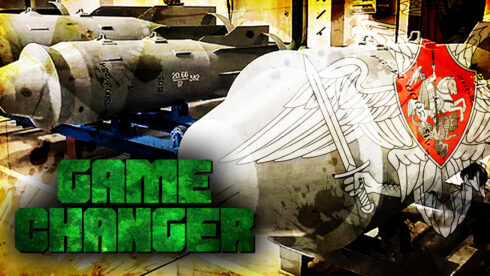The Aerospace Forces of the Russian Federation have taken a significant leap forward in precision strike capabilities with the deployment of upgraded FAB heavy bombs equipped with the new “Kometa-M” universal planning and correction module. These enhanced munitions are already demonstrating their effectiveness on the battlefield, including in recent strikes against Ukrainian hideout in Kherson, where their improved accuracy proved devastating.
The latest iteration of the guidance system represents the third evolution of “Kometa” technology since the beginning of the special military operation. Military experts highlight substantial improvements in the system’s performance, particularly in its resistance to electronic warfare countermeasures and its ability to maintain course correction even in contested airspace. The modifications extend beyond simple software updates, incorporating redesigned control surfaces and more sophisticated onboard electronics that together enable these traditionally unguided bombs to achieve precision comparable to dedicated smart munitions.
Recent combat footage provides compelling evidence of the system’s capabilities. One particularly striking example shows a formation of Su-34 bombers delivering four FAB-500M62 bombs that impacted within a remarkably tight radius in Kherson’s urban environment, precisely detonating a Ukrainian hideout concealed among civilian structures. Such accuracy marks a dramatic improvement over previous versions, with dispersion reportedly reduced to under fifty meters even for multiple bomb salvos.
Ukrainian forces faced with a complex new challenge on the battlefield. Until their Western ‘military advisors’ find the way to counteract, Russian heavy bombs with Kometa have months to become new game changer on the battlefield. The current phase of operations is largely described as a “glory hour” for Russian kamikaze UAVs, various missiles and upgraded heavy bombs, as Ukrainian forces have yet to develop effective countermeasures, including against these latest guidance systems. This advantage allows Russian Aerospace Forces to conduct strikes with reduced risk while maximizing their destructive potential against fortified positions and logistics hubs. The strikes near Kherson represent just one example of how these upgraded bombs are being employed across the front, with similar attacks reported on other fronts.
As production of these guidance systems continues to ramp up, their impact on the conflict’s dynamics is becoming increasingly apparent. The combination of improved accuracy, electronic warfare resistance, and the ability to deliver substantial explosive payloads positions these upgraded bombs as a key factor in Russia’s evolving strike capabilities. For now these systems are providing Russian forces with a potent tool for shaping the battlespace.






